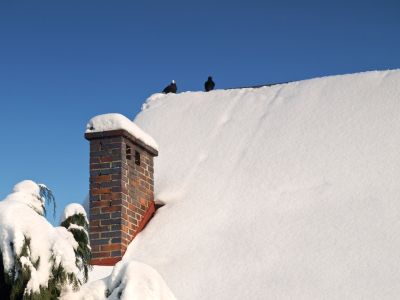by Alex A. Kecskes
Bird proofing government buildings, parks, military bases, and aircraft hangars has been a problem for quite some time.
At the dawn of aviation, the Wright brothers recorded a
bird strike that interfered with their early flights. More recently, Hanscom Field in Bedford Massachusetts had roughly 5,000 starlings roosting in their hangar. Clinton Air Force Base in Oklahoma had six hangars with 200-300 house sparrows in each hangar. Lockbourne Air Base in Ohio had 2,000 to 3,000 house sparrows between three hangars with an additional 2,000-3,000 starlings. Wright-Patterson Field had pigeons in their propeller testing area. Selfridge Air Force Base in Michigan suffered from a sparrow invasion. The list goes on and on. Pest birds, it seems, love to hang out in hangers.
Birds entering various openings within aircraft hangars, roost in the I-beams high inside these structures. The Air Force says that the accumulation of droppings, feathers, and other matter poses a big problem. Bird droppings, accumulating on the aluminum skin of airplanes, can corrode the metal and eventually weaken the structure itself. Another concern is that if droppings, feathers, and other matter get into the engines, critically important parts must be cleaned as they could stall an engine during flight. Cleaning an aircraft engine is very expensive and time consuming.
So how does one
bird proof these aviation areas? In the past, bird proofing aircraft and the facilities that housed and repaired them was a hit or miss proposition. Toxicants like strychnine-treated grain were used to inhumanely eliminate pest birds—particularly pigeons. Pellet guns were also used. As was high-pressure air or water to discourage roosting.
Today,
bird-proofing methods vary from scaring devices, repellents and screening to mists and sonic systems. To bird proof large areas, bird netting creates an impenetrable barrier for most birds. Some
heavy-duty bird netting is made of polyethylene fabric and is UV stabilized, flame resistant and rot and waterproof. Netting comes in various mesh sizes to deter a wide range of birds. To seal out small openings, there's copper mesh cloth. Available in rolls, it's easily stuffed into cracks or holes to let air circulate but keep birds out.
Ideal for hangers, bird-misting systems are both humane and effective. These
bird proofing systems work by releasing an ultra fine mist that pest birds can't see and prefer not to be around. The mist typically employs a chemical called methyl anthranilate, a grape extract that naturally occurs in concord grapes. The extract has been widely used for decades to deter a wide variety of pest birds including, sparrows, pigeons, starlings, crows, blackbirds and geese. Yet it's safe for people, pets, plants and birds.
Another useful bird proofing method is the electric-track
bird repeller. Ideal for ledges, rooftops, and flat or curved surfaces, these low-profile electrified tracks deliver a non-lethal electric shock that discourages birds from landing or feeding. Some manufacturers offer a flow-through design to keep water from damming up on rooftops and other surfaces.
Bird proofing measures--bird netting, bird repellents,
bird spikes and electric shock systems--can be found on our nation's Capitol and White House, as well as on major civil and military facilities worldwide. Bird spikes are ideal for pigeons and other large birds. Some bird spikes are made of strong, rigid unbreakable polycarbonate, others have stainless steel spikes. A cousin to the bird spike is the bird spider. The spider arms wave with the breeze, keeping wild birds from landing. Most come in a variety of diameters and install easily. And although they appear menacing, spikes and spiders won't harm birds.
Many government buildings tend to be older with established pest bird populations. Failure to bird proof these buildings and offices can lead to a number of problems. The acid secretion produced by the fungi that live in bird droppings can discolor paint and other surfaces. Pest bird nests and droppings can get sucked into ducts, grilles and vents, blocking air conditioning and heating units. In these tough times with governments under the budget knife, cleaning and restoring buildings damaged by pest birds is one expense many governments can do without.
The bird slope is a simple solution ideal for many government buildings. Suitable for eaves, ledges, beams and other 90-degree areas where pest birds tend to nest and roost, the angled, slippery PVC panels cause pest birds to simply slide off when they try to land. For an even easier-to-install solution, there's bird gel. Birds hate this stuff because it creates a sticky surface that birds find very annoying to land in. It's safe for birds (except swallows) and a great way to keep birds from landing on ledges, I-beams, parapet walls, conduit, pipes, and most flat or curved surfaces.
At public parks, benches, playground equipment, statues, entry monuments and other structures can be rendered unsightly and eventually ruined by pest birds. There's also the health hazard pest birds pose to park visitors. Children placing their hands on bird droppings left on park bench armrests or playground equipment can be at risk, since many fail to wash their hands before snacking at the park. These droppings have been known to carry and transmit any of 60 known diseases. Sparrows and Feral Pigeons can carry bacteria causing Salmonellosis. Feral Pigeons carry Ornithosis--similar to viral pneumonia. If that's not bad enough, birds, bird droppings and their nesting fodder contain insects and mites, which can cause even more damage.
One effective and inexpensive way to
bird proof parks is through the use of visual deterrents. Iridescent reflective foil or flash tape can be easily strung around lampposts and turned into pennants. Inflatable balloons are another economical visual scare device. Their lifelike reflective predator eyes and markings drive birds away by creating an “Optical Distraction Zone.”
Keep our country beautiful and safe, and do it humanely by
bird proofing.









